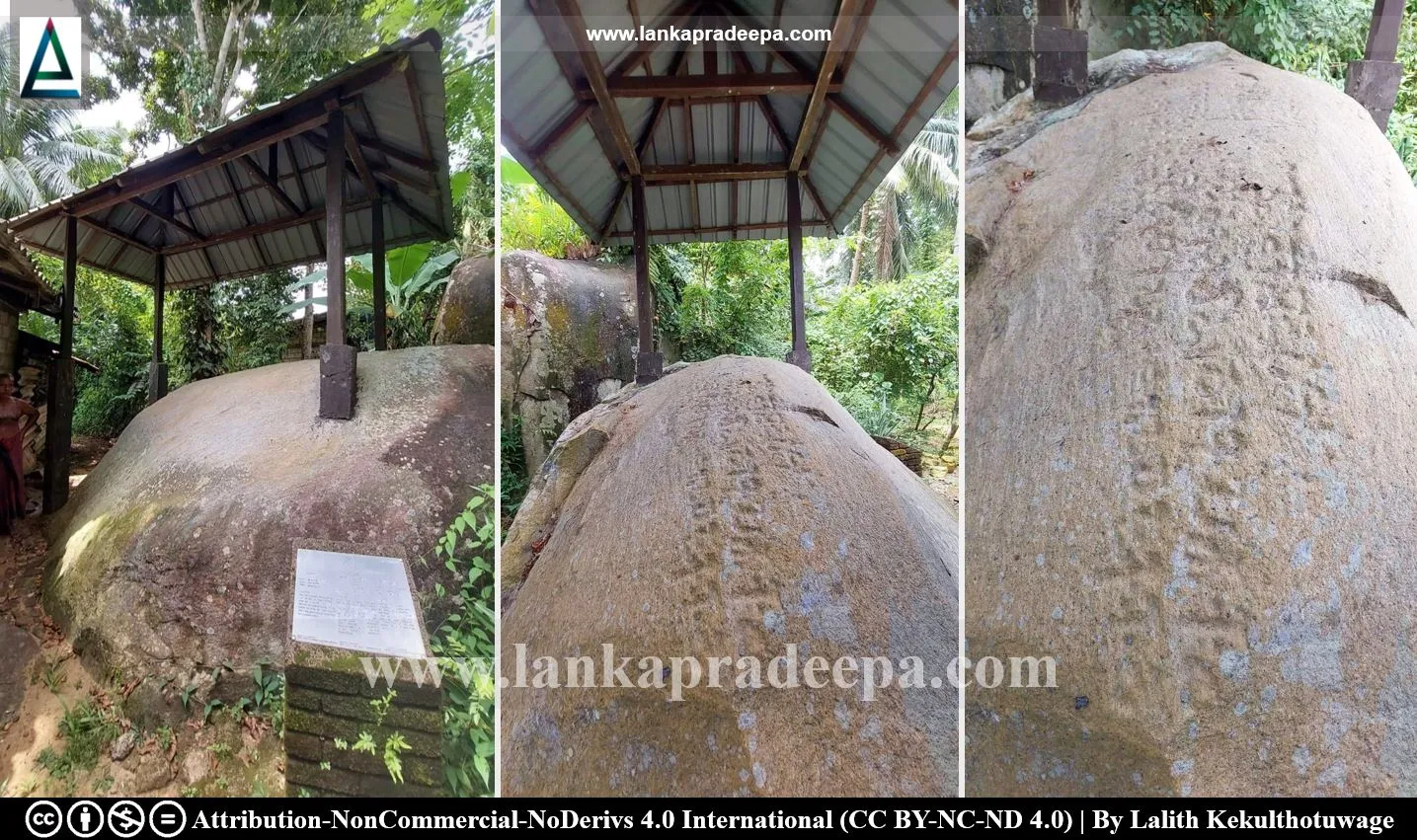
Diyagama inscription, also known as Pelunu gala inscription (Sinhala: දියගම සෙල්ලිපිය, පැළුණුගල සෙල්ලිපිය) is a rock inscription discovered from Diyagama in Kalutara District, Sri Lanka. It is presently placed in a plot of land situated about 8 km distance above the Kalu Ganga River mouth.
The location & the discovery

Pelunu-gala in Sinhala means "the split rock". This inscription is known by that name because of the split rock that is in the middle of the Kalu Ganga River near the location of this inscription.
The inscription has been engraved on the surface of a rock boulder at Diyagama close to the Kalu Ganga River. In ancient times, Diyagama is believed to be a port of the Kalu Ganga River and the area located to the north of it belonged to the old
division Kalyani-desa, originally the Kingdom of Kalyani (Katupotha, 2011; Nicholas, 1963).
The inscription was first recorded by E. Muller in the 19th century (Muller, 1883). It had been brought to the attention of Muller by Waskaduwe Sri Subuthi Thera (Katupotha, 2011; Muller, 1883).
Content
The inscription is believed to have been indited in or before the 5th century A.D. (Katupotha, 2011; Muller, 1883). It has four lines of writing. Of them, several letters in the first three lines are missing due to the weathering of the rock. It records a temple named Kalaka Mahavihara, an old Buddhist temple in Kalutara that no longer exists (Nicholas, 1963). The market town of Kaliniya (present Kelaniya) is another name found in the inscription (Abeyawardana, 2002; Nicholas, 1963).
Diyagama Rock Inscription
Period: 2nd-3rd century A.D. Script: Later Brahmi Language: Old Sinhala
Content: The inscription contains a list of lands and paddy fields donated to a Buddhist monastery named Kala Maha Viharaya which could have been a major religious establishment of the day situated by the Kalu Ganga river.
Reference: The information board at the site by the Department of Archaeology and the Ministry of National Heritage and Cultural Affairs.

.
Attribution
#) LankaPradeepa.com extends its gratitude to Lalith Kekulthotuwage for providing the necessary photographs required for this article. All the photos are published here with the permission of the author.
References
1) Abeyawardana, H.A.P., 2002. Heritage of Sabaragamuwa: Major natural, cultural and historic sites. Sabaragamuwa Development Bank and The Central Bank of Sri Lanka. ISBN: 955-575-077-7. pp.104-105.
2) Katupotha, J., 2011. Cultural and Historical Monuments and Protected Resources of Archaeological Significance in the Lower Kalu Ganga Basin, Sri Lanka. Conference Paper. National Archaeological Symposium 2011. pp.197-213.
3) Muller, E., 1883. Ancient Inscriptions in Ceylon. London. pp.48,77,111.
4) Nicholas, C. W., 1963. Historical topography of ancient and medieval Ceylon. Journal of the Ceylon Branch of the Royal Asiatic Society, New Series (Vol VI). Special Number: Colombo. Royal Asiatic Society (Ceylon Branch). p.118.
2) Katupotha, J., 2011. Cultural and Historical Monuments and Protected Resources of Archaeological Significance in the Lower Kalu Ganga Basin, Sri Lanka. Conference Paper. National Archaeological Symposium 2011. pp.197-213.
3) Muller, E., 1883. Ancient Inscriptions in Ceylon. London. pp.48,77,111.
4) Nicholas, C. W., 1963. Historical topography of ancient and medieval Ceylon. Journal of the Ceylon Branch of the Royal Asiatic Society, New Series (Vol VI). Special Number: Colombo. Royal Asiatic Society (Ceylon Branch). p.118.
Location Map
This page was last updated on 12 October 2023

